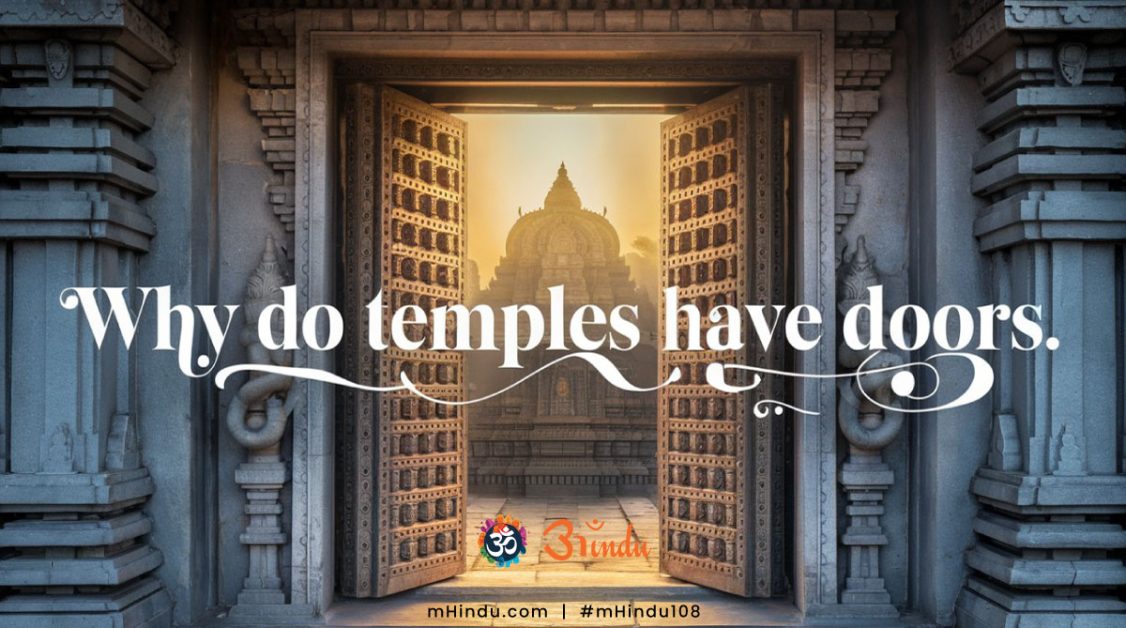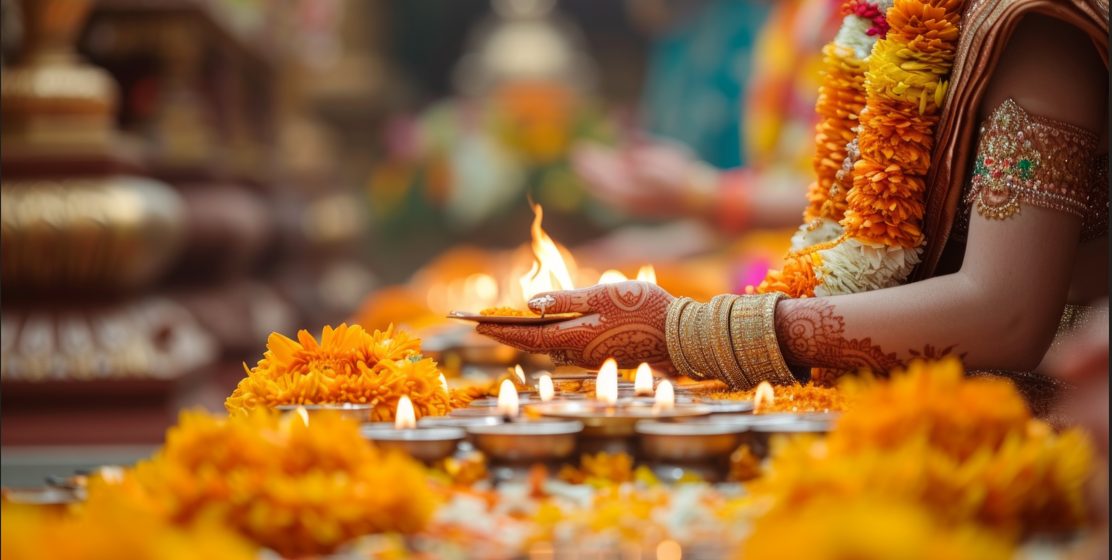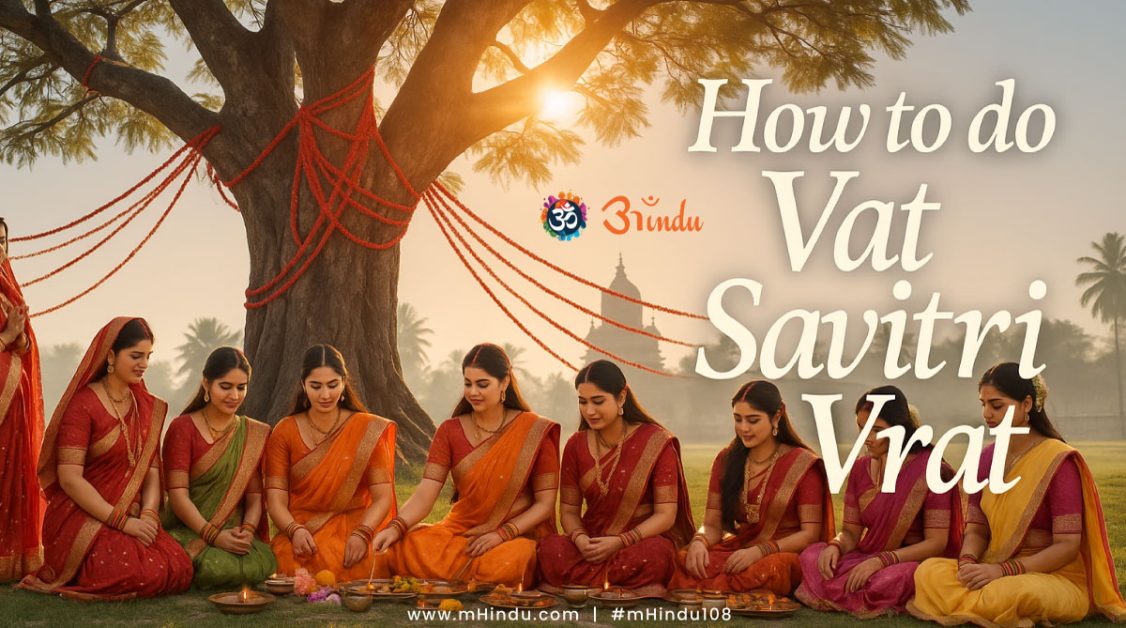
Introduction
A temple — or mandir — is not just a structure of stone and mortar. It is a cosmic gateway, a sacred yantra brought to life through mantra, geometry, and devotion. But one question arises in the minds of many devotees and curious travelers alike.
Explore Blog Content
ToggleWhy do temples have doors?
Unlike Western places of worship that often have open arches or entryways, Hindu temples often feature grand, intricately carved doors, sometimes even multiple layers of them — outer, inner, sanctum.
But are these doors merely architectural or functional? Or do they hold spiritual meaning?
This blog decodes the symbolism of temple doors in Hinduism, diving into the worlds of:
- Vedic wisdom
- Shilpa Shastra
- Symbolic philosophy
- Chakric energy gates
- Ritual tradition and temple timing
You’ll also find the answers to real-world queries like:
- Why are temple doors closed during specific hours?
- Why do some temples have massive gopuram gates but inner doors too?
- What is the significance of temple doors in scriptures like Agama or Vastu texts?
“द्वारं मोक्षस्य पावनम्।”
“The temple door is the sacred gateway to liberation.”
By the end of this blog, you’ll see the spiritual meaning of temple entrance not just as a boundary — but as a threshold between the human and the divine.
Scriptural and Symbolic Meaning of Temple Doors
In Sanatan Dharma, nothing is just physical. Everything visible is a metaphor for the invisible.
So, when we ask why do temples have doors, we must ask deeper — what do doors represent in dharmic philosophy?
Symbolism of Temple Doors in Hindu Thought:
- Threshold of Maya and Moksha:
The door represents the passage from samsara (worldly illusion) into darshan (divine sight). You leave your desires outside and enter pure consciousness. - Initiation into Sacred Space:
Crossing the temple door is a sankalpa — a spiritual resolution. It marks a mental and karmic shift. - Energy Filter:
According to Tantra and Yoga, temple doors are energetic thresholds — designed to separate the mundane field of material life from the sacred vibrational field of the deity.
Scriptural References:
- The Agamas (texts guiding temple rituals) describe the “dwara-puja” — the ritual purification and decoration of temple doors before any deity installation.
- In Shilpa Shastra, the door is called “Simhadwara” — the lion gate — a protective threshold that guards the deity and sanctifies the devotee.
What is the symbolism of temple doors in Hinduism?
Temple doors represent a sacred transition — from the outer world of illusion to the inner world of truth. They symbolize a gateway to the divine and are decorated with auspicious symbols to protect the sanctum’s energy.
Why are doors used in sacred architecture?
Doors are not just functional but ritualistically essential. In Vedic architecture, they mark entry points into energy fields. Crossing a temple door is akin to crossing a cosmic firewall — leaving ego, distraction, and impurity behind.
Vedic Architecture – The Role of Doors in Vastu & Shilpa Shastra
Temples in Hinduism are built using strict Shilpa Shastra and Vastu Shastra guidelines. These are not merely architectural blueprints — they are spiritual engineering manuals, describing how to align physical space with cosmic energy flow.
Direction Matters: Why Temples Face East & Have Doors
Most temples face east — toward the rising sun — symbolizing the awakening of the soul.
The main door is designed as:
- A receiver of surya tattva (sun energy)
- A marker of auspicious muhurta (right timing)
- A chakra activator — particularly of the ajna and anahata chakras during sunrise darshan
Size, Shape & Carvings Matter
- Door Frame (Torana): Sculpted with gods, guardians (dwarapalakas), and yantras
- Door Panels: Sometimes made of sandalwood, copper, or gold — material affects the sanctum’s vibration
- Multi-Layered Doors: Some temples like Jagannath Puri or Meenakshi Amman have multiple doors — each with a karmic filter purpose
“यथास्तंभं तथा द्वारं।”
“As the pillars hold strength, the doors hold sanctity.” — Mayamata
In Mayamata, a Shilpa Shastra text, entire chapters are devoted to dwara-vinyasa — the layout and symbolic alignment of temple doors.
What does Vastu say about temple entrances?
Vastu classifies temple doors as gateways of prana (life force). They must face cardinal directions, be proportionate to the sanctum, and have yantras or symbols that filter negative energy.
Why do temples face East and have grand doors?
Temples face east to receive divine solar energy at dawn. The door acts as an energy portal — inviting Surya, Agni, and Vishnu principles into the heart of the temple.
The Spiritual Role of Temple Entrances in a Devotee’s Journey
A Hindu temple is not merely a building — it is a cosmic diagram (mandala) brought into the material world. Just as a spiritual journey begins with intention, the physical act of crossing a temple’s threshold is a symbolic act of inner purification.
So, when asking why do temples have doors, one must look at it as more than architecture — it’s an initiation point into the sacred.
Entering the Temple = Entering the Self
In dharmic tradition:
- The outer world is maya (illusion)
- The inner sanctum is satya (truth)
- The doorway is the yoga (path or union)
To enter the temple is to pass through layers of the self:
- Outer Courtyard (Material self)
- Main Hall (Mental self)
- Inner Sanctum (Soul or atman)
- Garbhagriha (Presence of the Divine)
The temple door becomes a symbolic chakra gate — often aligned with the heart or third eye chakra of the structure itself.
“द्वारं न केवलं प्रवेशस्य साधनम्, किन्तु आत्मदर्शनस्य प्रारम्भः।”
“The door is not just the means to enter, but the beginning of self-realization.”
Rituals at the Door
Every major temple has rituals at the door:
- Dwar Puja (worship of the door guardians)
- Torana decoration (mango leaves, swastik)
- Bell before entry (to awaken inner awareness)
- Footwear removal — leaving the ahamkara (ego) outside
What is the spiritual meaning of temple entrances?
The entrance of a Hindu temple is the threshold between the material and spiritual. It represents mental purification, intentionality, and readiness to receive divine energy.
Why are temple doors opened and closed daily?
Opening and closing doors reflects cosmic rhythms — dawn, dusk, rest, and awakening. It aligns with prakriti’s cycles, and ensures that divine presence is respected, invoked, and ritually honored.
Temples Where Doors Hold Deep Symbolism
Many famous Hindu temples feature unique doors that aren’t just access points — they are living aspects of ritual, secrecy, or divine will.
Examples:
1. Jagannath Temple, Puri:
- Has multiple doors: Singhadwara, Ashwadwara, Hastidwara, and Vyaghradwara.
- Doors are opened during specific pahuda timings, aligning with deity’s rest.
2. Badrinath Temple:
- The main doors are shut for six months each winter, symbolizing divine rest.
- Opening and closing are elaborate Vedic ceremonies — echoing seasonal cycles.
3. Padmanabhaswamy Temple:
- One sealed door (Vault B) remains unopened, believed to be mystically guarded.
- Its door has Nag Devata carvings and has defied all modern unlocking attempts.
4. Meenakshi Amman Temple, Madurai:
- Inner doorways represent Shiva’s and Shakti’s energies.
- The sanctum is reached only after crossing multiple doorways, each narrowing focus.
Are there temples known for their sacred doors?
Yes. Temples like Jagannath, Padmanabhaswamy, Badrinath, and Meenakshi have ritual, astrological, or mystical traditions linked to their doors — reflecting deeper tantric and Vedic symbolism.
Why do some temples have multiple or sealed doors?
Multiple doors represent karmic layers or cosmic guardianship. Sealed doors often carry esoteric significance, sometimes associated with tantric protections, serpent energies (Naga), or astral seals.
Why Temple Doors Are Opened and Closed — The Ritual Logic
You may have noticed:
- Temples are closed during eclipses
- Many temples shut by noon or evening
- Some temples shut during certain planetary periods
These closures are not random — they are based on Agama Shastra, astrological logic, and energetic alignment.
Timings & Reasons
- Eclipses: Deity’s energy is believed to retract. Doors are shut to prevent graha dosha.
- Midday Closure: The deity “rests” (symbolic pranayama) — bhoga is offered.
- Evening Closure: To preserve sanctity before ratri aarti or shayan rituals.
- Planetary Timing (Hora): Some temples avoid opening during inauspicious planetary hours.
“मंदिरद्वारं तु कालानुसारं प्रबुद्धत्वं दर्शयेत्।”
“The temple door reflects divine awareness according to cosmic time.”
Why are temple doors closed during eclipse or night?
Eclipses are periods of high astrological imbalance. Doors are closed to preserve the sanctum’s energy and protect devotees from subtle imbalances.
Who decides temple door timings?
Timings are based on Agama Shastra, local traditions, astrological charts, and guidance from temple priests and scholars trained in Vedic cosmology.
Summary
At first glance, the doors of a Hindu temple may appear merely functional. But as we’ve discovered, these doors are not just physical barriers — they are spiritual gateways.
This blog explored the deeper answer to: Why do temples have doors?
The answer lies in the sacred architecture of Sanatan Dharma, where form follows spiritual function. From Shilpa Shastra and Agama rituals to symbolism and cosmic energy alignment, temple doors serve as:
- Protectors of sacred space
- Markers of spiritual initiation
- Energy filters between material and divine realms
- Interfaces of karma, darshan, and cosmic time
Every door — whether carved in stone or sandalwood, flanked by dwarapalakas or adorned with flowers — is a message to the soul: Prepare yourself before entering the divine.
The spiritual meaning of temple entrance is not to keep people out, but to remind each seeker: You are not entering just a space — you are entering a higher frequency of consciousness.
Whether it’s the closed vault of Padmanabhaswamy, the seasonal doors of Badrinath, or the daily rituals of Jagannath Puri, each door opens not just with a key — but with bhava (intention), shraddha (faith), and shuddhi (purity).
In the end, the most important door is the one inside you — the gateway to your own divine self.
“Enter with awareness, for the divine does not live in stone — it lives in stillness.”
FAQs
1. Why do temples have doors in Hinduism?
Temple doors symbolize the boundary between the material world and the divine realm. They represent purification, protection, and spiritual transition.
2. What is the significance of temple doors in Vastu?
According to Vastu, temple doors must face east or north, and are designed to channel cosmic energy toward the sanctum.
3. Why are temple doors opened and closed at specific times?
This follows Agama Shastra and astrological muhurta, aligning with divine cycles of rest, activity, and energy shifts.
4. What is the spiritual meaning of temple entrance?
The entrance represents intentional awakening, where a devotee moves from worldly concerns into divine focus.
5. Why are some temple doors sealed or never opened?
Certain doors, like in Padmanabhaswamy Temple, carry tantric or esoteric protections, and are believed to be energetically sealed.
6. Are multiple doors in a temple symbolic?
Yes. Multiple doors represent layers of spiritual evolution, protecting the sanctum and preparing the mind gradually for darshan.
7. Why are temple doors closed during eclipses?
Eclipses are considered astral disturbances. Doors are closed to prevent negative planetary energy from entering the sanctum.
8. Do all temples follow the same rules for doors?
Not always. Traditions vary based on sampradaya, deity, region, and Agamic lineage of the temple.






